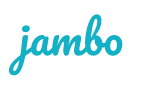
Une approche structurée de la gestion des problèmes des parties prenantes vous permet d'identifier, de hiérarchiser et de résoudre les préoccupations et les points de vue des parties prenantes au fur et à mesure qu'ils se présentent. Cela permet aux parties prenantes de se sentir écoutées et d'éviter que des problèmes mineurs ne se transforment en risques qui affectent votre projet et votre organisation.
Il est essentiel de rendre des comptes aux parties prenantes en répondant à leurs questions pendant les phases de planification, de prédéveloppement et d'exploitation d'un projet. Pour rester informé et gérer toutes les préoccupations tout au long du cycle de vie de votre projet, il est conseillé d'utiliser un logiciel spécialisé comme le logiciel de gestion des relations avec les parties prenantes (SRM) afin de suivre et de gérer les questions des parties prenantes.
Cet article définit la gestion des questions relatives aux parties prenantes et explique comment une MRS est conçue pour que vous et votre équipe travailliez à partir des mêmes informations et priorités actualisées. Vous pourrez ainsi gérer les risques du projet sans jamais oublier d'aborder les questions des parties prenantes.
Dans ce blog, nous aborderons les sujets suivants
- Qu'est-ce que la gestion des questions relatives aux parties prenantes ?
- Qu'est-ce que le logiciel SRM ?
- Pourquoi l'organisation des données est-elle essentielle à la gestion des problèmes des parties prenantes ?
- Comment un MRS aide-t-il à gérer les problèmes des parties prenantes ?
- Comment choisir un MRS ?
Qu'est-ce que la gestion des questions relatives aux parties prenantes ?
La gestion des problèmes des parties prenantes est un moyen proactif et reproductible de repérer, d'évaluer et de résoudre les préoccupations des parties prenantes avant qu'elles ne deviennent des crises. L'engagement étant fluide, les équipes entendent souvent plus que le plan de consultation initial. De nouvelles questions, attitudes et risques apparaissent au fil du temps. Une bonne approche de la gestion des problèmes aide les organisations à agir rapidement pour protéger leur réputation, répondre aux attentes réglementaires, maintenir les projets sur la bonne voie et instaurer la confiance grâce à une communication claire et opportune.
En pratique, cela signifie tenir un registre vivant des problèmes (ce qui a été soulevé, par qui, quand, le contexte et le statut), attribuer la propriété et utiliser des critères simples pour classer ce qui est le plus important en fonction de l'impact, de la probabilité, de l'urgence et de l'adéquation stratégique. Les équipes se mettent ensuite d'accord sur des actions et des échéances, tiennent les gens informés grâce à un plan de communication de base et suivent les progrès grâce à des tableaux de bord et des rapports périodiques. Ensuite, elles examinent les résultats et tirent les leçons qui s'imposent afin d'améliorer le prochain cycle. En bref : identifier, hiérarchiser, agir et évaluer en permanence.
Qu'est-ce qu'un logiciel de gestion des relations avec les parties prenantes (SRM) ?
Un SRM est un logiciel qui permet de gérer l'ensemble des relations et des communications avec les parties prenantes. Avec un SRM, vous et votre équipe disposez d'un endroit unique pour enregistrer les informations relatives à l'engagement des parties prenantes, y compris les questions soulevées, afin que chacun sache exactement où trouver tout ce dont il a besoin. L'organisation des données simplifie le processus de gestion des relations avec les parties prenantes, de sorte qu'il ne devienne ni écrasant ni ingérable.
En savoir plus sur les MRS grâce à notre guide ultime →
Pourquoi l'organisation des données est-elle essentielle à la gestion des problèmes des parties prenantes ?

Grâce à la centralisation et à l'organisation de toutes vos données, vous pouvez mieux suivre et gérer les informations essentielles concernant vos parties prenantes et vos projets d'engagement. Ces informations vous aident à comprendre ce qui préoccupe vos parties prenantes, à établir des relations avec elles et à apprendre d'elles pour améliorer les résultats de vos projets. Ces informations sont essentielles pour une gestion efficace des problèmes et la résolution des crises. et la résolution des crises, car l'omission d'un seul problème peut faire dérailler votre projet et vos relations.
Lorsque vous jonglez avec les différentes parties prenantes et leurs problèmes, le fait de disposer d'un espace défini et collaboratif pour conserver ces informations vous permettra de répondre facilement à toutes les préoccupations.
Certains problèmes sont urgents, tandis que d'autres peuvent n'être traités qu'à un stade ultérieur du projet. En enregistrant ces informations en conséquence et en étant capable de gérer les tâches de suivi des problèmes, votre équipe n'a pas à s'inquiéter d'oublier de traiter un problème.
Connaître la matérialité d'un problème, son niveau d'impact par rapport à sa priorité, vous permet de mieux évaluer ce qui met le plus en danger votre projet et de le communiquer à votre équipe et à votre direction. Certains systèmes vous permettent de visualiser ces données dans le cadre de votre suivi et de vos rapports, ce qui peut vous faire gagner beaucoup de temps.
Un rapport de McKinsey sur l'engagement externe révèle que 56 % des organisations performantes utilisent des logiciels pour cartographier les questions externes susceptibles d'affecter l'entreprise.
En règle générale, votre processus de gestion des problèmes aura un impact significatif sur les relations avec les parties prenantes et sur leur volonté de collaborer avec votre organisation dans le cadre de projets actuels et futurs.
En savoir plus sur la gestion des données relatives à l'engagement des parties prenantes →
Comment un SRM améliore-t-il la gestion des problèmes ?
Une gestion pratique des problèmes permet d'éviter que de petites difficultés ne se transforment en crises majeures. En détectant les problèmes à un stade précoce et en agissant rapidement, les organisations protègent leur réputation, restent proactives vis-à-vis des régulateurs et des parties prenantes, et découvrent de nouvelles opportunités commerciales. Voici comment un logiciel de gestion des relations avec les parties prenantes peut améliorer la gestion des problèmes avec ces dernières :
1. Rendre l'information accessible et compréhensible
Un SRM vous permet de gérer les informations de contact des parties prenantes et de créer un profil de partie prenante, ce qui vous donne, à vous et à votre équipe, un accès facile à toutes vos communications avec une partie prenante. Avec un logiciel idéal, tous les problèmes associés à la partie prenante sont automatiquement liés à son profil, de sorte qu'il est facile de dresser un tableau complet de l'historique de son engagement (vous ne devriez jamais avoir à fouiller dans un logiciel pour trouver des informations sur les problèmes de la partie prenante !)
2. Établir des relations avec les parties prenantes
Les parties prenantes sont frustrées lorsqu'elles rencontrent un représentant de l'entreprise et lui disent : "J'en ai parlé à votre personnel la semaine, le mois ou l'année dernière. Vous ne parlez pas ?" Connaître les problèmes existants permet de se préparer à tout engagement avec une partie prenante et d'instaurer la confiance en montrant que l'on est à l'écoute.
En traitant les problèmes avec tact et rapidité, vous vous assurez que vos parties prenantes savent que vous prenez leurs préoccupations au sérieux, vous augmentez la probabilité qu'elles soient disposées à travailler avec vous et vous contribuez à maintenir, voire à renforcer, la confiance vitale des parties prenantes.
3. Comprendre les risques pour réduire la responsabilité

Un SRM doté d'un module de gestion des problèmes garantit que les problèmes des parties prenantes sont au premier plan et faciles à suivre. Cela signifie que votre équipe ne les perdra pas de vue et qu'elle pourra travailler en collaboration pour traiter (et, espérons-le, résoudre) chacun d'entre eux.
La fonction de chronologie de Jambo est extrêmement utile aux équipes qui ont besoin d'un moyen facile et compréhensible de se tenir au courant des mises à jour du projet. Vous pouvez également voir la matérialité de chaque problème, qui identifie l'impact et la priorité du problème en un coup d'œil. Cela vous permet de comprendre quel est le risque le plus important pour votre projet.
4. Un historique de toutes les questions pour raconter toute l'histoire
Les MRS facilitent l'obtention d'une vue d'ensemble de toutes les préoccupations, y compris la possibilité d'effectuer des recherches dans vos données pour trouver les défis associés à des parties prenantes ou à des organisations spécifiques dans un projet ou dans l'ensemble des projets.
Les enregistrements de communication associés au problème sont facilement consultables dans le cadre du profil global. Cette chronologie des informations est essentielle car, par exemple, si vous rencontrez une situation où il y a une divergence sur la façon dont un problème a été traité, vous pouvez rapidement extraire toutes les informations nécessaires pour montrer la communication exacte qui a eu lieu, ce qui contribue à responsabiliser et à protéger tout le monde.
5. Tags pour organiser les données essentielles
Les étiquettes peuvent vous aider à suivre les parties prenantes qui ont soulevé des questions ou qui sont susceptibles de le faire, ce qui vous permet de ne pas perdre de vue les préoccupations passées, présentes et futures.
Un SRM doté d'une fonction d'étiquetage peut vous aider, vous et votre équipe, à organiser vos informations sur les parties prenantes en fonction de leurs intérêts, préoccupations, importance et thèmes émergents. Cette capacité à mieux gérer et classer vos informations sur les parties prenantes vous permettra d'établir des rapports et d'analyser vos données plus efficacement.
6. Suivi des thèmes et tendances émergents
Les étiquettes sont essentielles lorsque vous souhaitez suivre des parties prenantes spécifiques. Grâce à cette fonctionnalité, vous pouvez ajouter des balises à des parties prenantes clés afin de les identifier en fonction de leur importance, de leurs préoccupations, de leurs intérêts, etc. Vous pouvez également filtrer et rechercher vos étiquettes pour trouver tous les engagements avec les parties prenantes étiquetées et exécuter des rapports en utilisant les étiquettes comme filtres.
Un système d'étiquetage personnalisé peut vous permettre d'attribuer aux parties prenantes et aux enregistrements d'engagement des étiquettes qui ont un sens pour votre processus d' engagement ou de gestion de projet, afin de mieux suivre et d'identifier les tendances de vos données ou les qualificatifs essentiels.
7. Traçabilité de bout en bout
La traçabilité au sein d'un SRM est essentielle car elle vous aide à comprendre comment vos informations sont liées (c'est-à-dire quand un problème est apparu, ce qui a été discuté lors d'une réunion, ou quelle tâche est requise avant votre prochain engagement).
La traçabilité est une fonction essentielle du SRM, car le fait de relier automatiquement chaque communication, problème, engagement et tâche vous facilite la tâche et vous aide à comprendre les parties prenantes, leurs opinions, l'état d'avancement de vos projets et l'origine d'un problème ou d'un engagement. Cela contribue également à améliorer l'expérience de l'utilisateur.
La traçabilité n'étant pas disponible avec tous les MRS, il convient d'examiner les capacités de liaison des informations de chaque logiciel avant de prendre une décision d'achat.
Découvrez comment les logiciels SRM contribuent à la traçabilité →
Comment choisir un MRS ?
Maintenant que nous avons discuté de l'importance d'un SRM pour lagestion des questions relatives aux parties prenantes, comment choisir le bon logiciel de gestion des relations avec les parties prenantes ?
Tous les SRM ne sont pas conçus ou pris en charge de la même manière, et tous les SRM n'incluent pas les fonctions de gestion des problèmes décrites ci-dessus. Un logiciel qui fonctionne pour une organisation peut ne pas être la bonne option pour une autre. Prenez donc le temps de l'examiner, de tenir compte de son processus de mise en œuvre et de choisir le meilleur SRM pour votre organisation.
Prochaines étapes
Réservez un appel de découverte de 15 minutes avec un expert Jambo pour bien comprendre comment un SRM peut rationaliser vos efforts d'engagement des parties prenantes.








